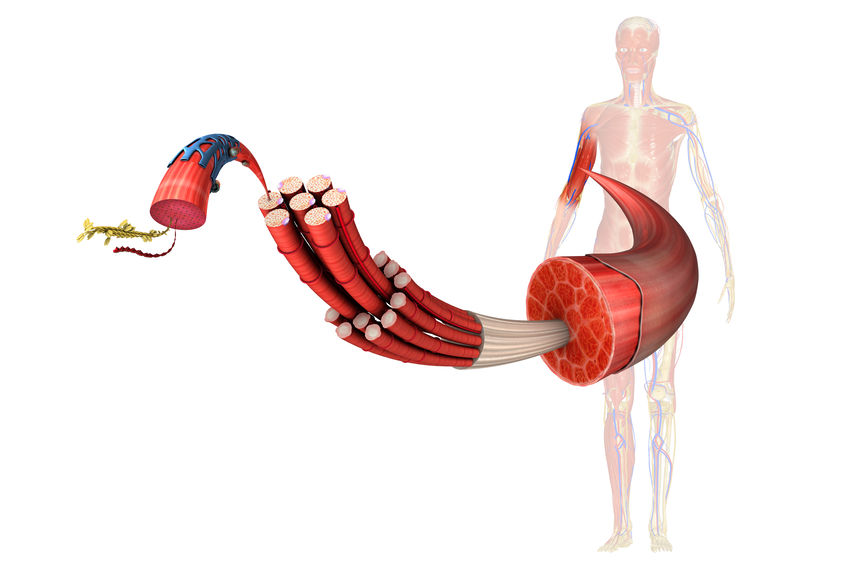⚠️ Test Running in Guest Mode
Important: Your final mark will not be saved.
1.1.a. Skeletal and muscular systems GapFill
You must fill all the gaps before clicking ‘Check Answers!’

There are three distinct types of muscle fibre found in the human body, categorised into slow- and fast-twitch fibre groups:
- Slow-twitch fibres
- Type I (Slow )
- Fast-twitch fibres
- Type IIa (Fast oxidative-glycolytic)
- Type IIb (Fast )
They each have distinct characteristics which determine their suitability for different intensities of exercise:
Type I
- High and mitochondria density, facilitating oxygen delivery to the muscle
- High myoglobin content resulting in a high oxidative capacity, allowing a large amount of oxygen to be stored and used during exercise
- High resistance to , allowing exercise to continue for long periods of time
- speed of contraction thus force production, to conserve energy for the latter stages of exercise
- Sporting examples: sustained muscle contractions over a long distance or duration, e.g. during marathon running, open-water swimming or race-walking events
Type IIa
- High oxidative and glycolytic capacities, catering for low to high intensities of exercise
- Medium resistance to fatigue, allowing exercise to be sustained for a moderate period of time
- High speed of , allowing a high force to be sustained over a moderate duration
- Sporting example: exercise that varies in intensity, such as rugby, where players are required to meet high-intensity demands (e.g. sprinting to make a line break or tackling an opponent) that are interspersed with periods of low-intensity exercise (e.g. retreating back into position when the ball is out of play)
Type IIb
- glycolytic capacity, allowing for high-intensity exercise to take place
- Low resistance to fatigue, meaning that high-intensity exercise can only be maintained for a period of time
- Greatest speed of contraction, enabling the muscle to contract to meet the demands of exercise
- Highest force production, exerting powerful contractions
- Sporting examples: activities that require a large amount of force produced quickly, such as weightlifters performing the clean and jerk Olympic lift, a sprinter performing the 100 m, or a shot-put throw
Regardless of the intensity, the order of recruitment always remains the same and is known as the ' principle' - from type I to type IIa to type IIb - the extent of which is determined by intensity. As exercise intensity increases, the speed and force requirements of the muscle , resulting in a preferential recruitment towards fibres that are capable of meeting these demands.
The same goes for recovery, whereby the characteristics of fibres determine their respective recovery rates. Microscopic tears in fibres that result from large force production capacities of this fibre type explain why they generally take the longest to recover, whereas fibres generally recover the quickest due to force production being low, preserving the structure of these fibres. However, recovery rate is also influenced by the degree of depletion in fibres, where exercise of a longer duration will usually elicit a greater glycogen depletion, thus incurring a longer time to replenish these stores, although this tends to be much sooner than the recovery from muscle damage (tears).